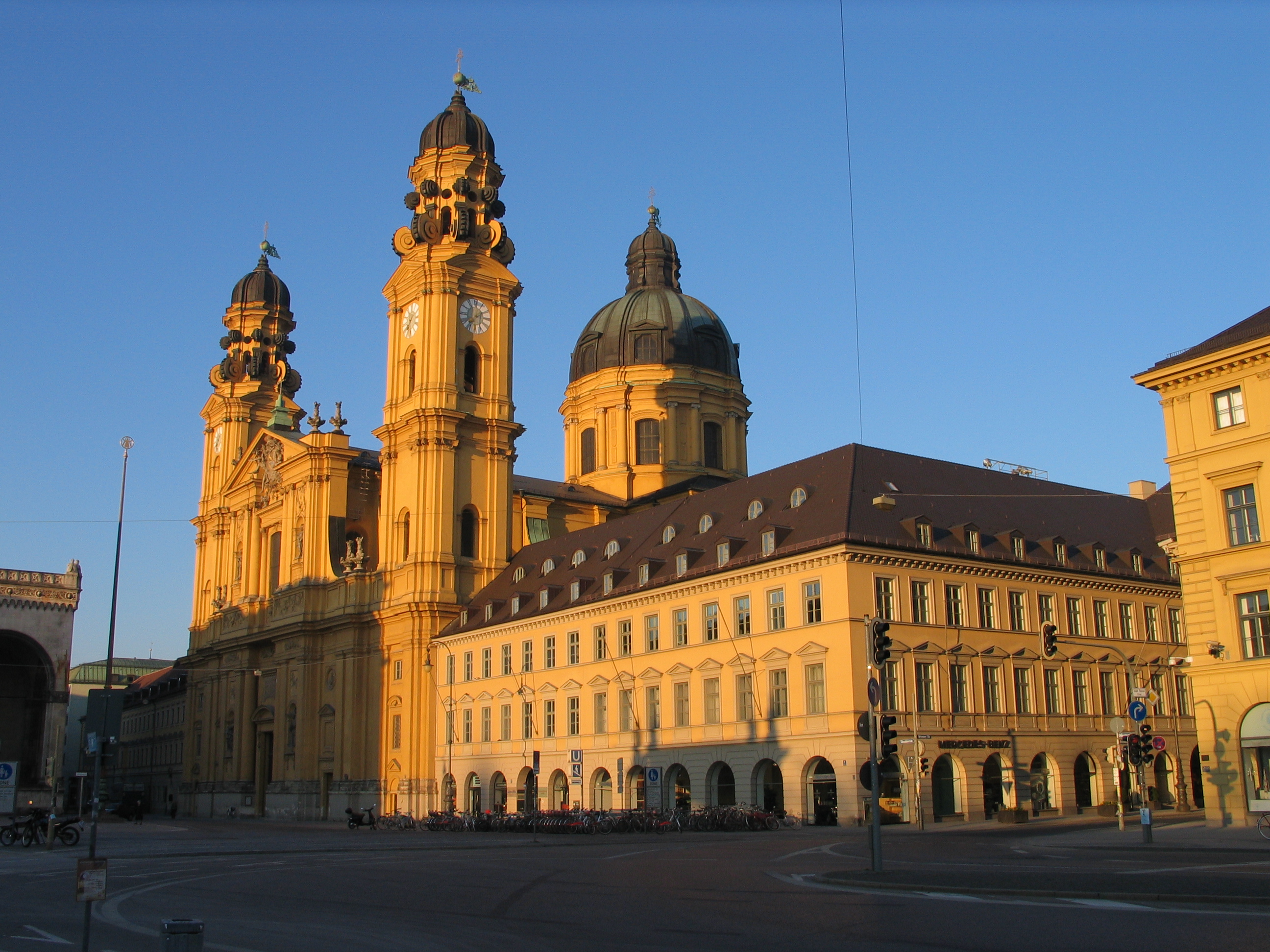Theatinerkirche (Munich, Germany)
Enlarge text Shrink text- Gmeinwieser, S. Die Musikhandschriften in der Theatinerkirche St. Kajetan in München, 1979 (a.e.)t.p. (Theatinerkirche St. Kajetan in München) p. ix (Theatinerkirche St. Kajetan) p. xi (Kollegiatsstiftskirche zum h1. Kajetan in München) p. xii (Hofkirche St. Kajetan)
- Brock. Enzyk., 1971,v. 13, p. 55 (under Munich: Theatinerkirche)
- Baedeker, Deutschland, 1978,p. 407 (under Munich: Theatinerkirche)
The Theatine Church of St. Cajetan and Adelaide (German: Theatinerkirche St. Kajetan und Adelheid) is a Roman Catholic church in Munich, Southern Germany. Built between 1663 and 1690, it was founded by Elector Ferdinand Maria and his wife, Henriette Adelaide of Savoy, as a gesture of thanks for the birth of the long-awaited heir to the Bavarian crown in 1662, Prince Max Emanuel. Currently administered by the Dominican Order, it is also known as the Dominican Priory of St. Cajetan. The church was built in Italian High Baroque style, inspired by Sant'Andrea della Valle in Rome, and designed by Italian architect Agostino Barelli. His successor, Enrico Zuccalli, added two towers (64.6 metres (212 ft) height), which were not originally included in the plans, and completed the dome (71 metres (233 ft) height) in 1690. The church has a lenghth of 72 metres (236 ft) and width of 15.5 metres (51 ft). The Rococo style façade by François de Cuvilliés was completed in 1768. The Mediterranean appearance and yellow coloring became a well known symbol for the city and had a lasting impact on Baroque architecture in Southern Germany.
Read more on Wikipedia >
 Corporate Body
Corporate Body








